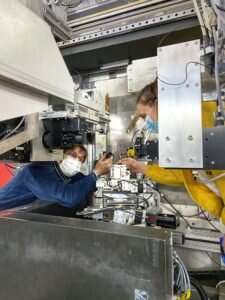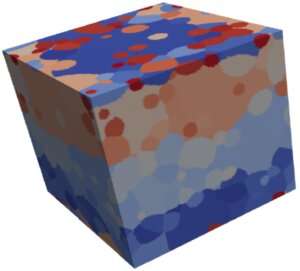Credit: Skylar Kang from Pexels
Stronger, lighter, cheaper materials are the name of the game in advanced manufacturing. Keeping costs down on materials that are equally, if not more, effective than previous ones is how businesses get ahead—and, theoretically, when consumers win.
But what if stronger, lighter and cheaper means shorter lifetimes for materials used in automobiles? That's the problem an international research team led by Western materials engineer Hamidreza Abdolvand tackled in a new study published by high-impact journals Acta Materialia and Communications Materials.
Abdolvand, along with Western Engineering graduate student Karim Louca and collaborators at the European Synchrotron Radiation Facility and Arts et Métiers ParisTech, discovered important factors contributing to the deformation (changing shape) of metals used in automobiles and nuclear reactors, and developed new models to predict the lifetimes of these materials.
The first step in the discovery, said Abdolvand, was a better understanding of "twinning"—a process of crystal reorientation that happens to the nano-sized building blocks of solid materials undergoing deformation.
"The role of twins is very important in materials science, and at the moment it is challenging for the scientific community to predict them because their onset is a rapid process," said Abdolvand, who led the study. "With my team and collaborators, we wanted to find out how they initiate, under which conditions, and what they do to the materials' properties."
Credit: University of Western Ontario
Twins are formed when load is applied onto, for example, zirconium or magnesium. The former is used in nuclear reactors and the latter in cars. Twins can sometimes disappear when the same load is removed or reversed, and the process of twinning can be good and bad, Abdolvand explained: it can improve ductility in materials—making them more amenable to reshaping without breaking—but it can also cause them to fracture, depending on the loading and localized stress conditions.
Long before the COVID-19 pandemic, Abdolvand and his team traveled to France to partner with ESRF in performing 3-D synchrotron X-ray diffraction experiments on automotive and nuclear-reactor parts with ESRF's ID11 beamline—a game-changing set of equipment used by scientists all over the world.
"The goal was to understand what happens at the atomic level and to relate that to how the material works," said Jonathan Wright, ID11 beamline scientist at ESRF.
-
European Synchrotron scientists Jon Wright (left) and Marta Majkut on the experimental hutch of ID11 beamline. Credit: D. Chenevier
-
A crystal plasticity model created by the scientists, where colours represent grains that the team reconstructed based on the experimental data we measured at ESRF. Credit: Hamid Abdolvand / Western University
Following the experiments, Louca painstakingly post-processed the more-than 4 terabytes (4,000 gigabytes) of diffraction images collected. "His contribution was vital to this project and his hard work is exemplary," said Abdolvand.
Next, the researchers combined their results with crystal plasticity modeling to study the formation and annihilation of twins. Using very thin samples, they applied load and found that during early stages of plasticity, twinning occurred with stress, but that the stress would ease with further loading.
"These findings are vitally important in the development of new models that allow manufacturers and researchers to predict what will happen to a material and at what point this material will start failing or fracturing," said Abdolvand.
A new model to be used for materials that twin was developed and the preprint is currently under review.
More information: Hamidreza Abdolvand et al. On the nucleation of deformation twins at the early stages of plasticity, Acta Materialia (2020). DOI: 10.1016/j.actamat.2020.07.010
Karim Louca et al. Formation and annihilation of stressed deformation twins in magnesium, Communications Materials (2021). DOI: 10.1038/s43246-020-00105-y
Provided by University of Western Ontario

























